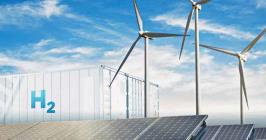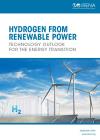

-
-
IRENA (2018), Hydrogen from renewable power: Technology outlook for the energy transition, International Renewable Energy Agency, Abu Dhabi.
Copied
/-/media/Files/IRENA/Agency/Publication/2018/Sep/IRENA_Hydrogen_from_renewable_power_2018.pdf
Copied
Hydrogen from renewable power: Technology outlook for the energy transition
Newsletter
This report is also available in Chinese (中文) and Japanese (日本語).
As the world strives to cut carbon emissions, electric power from renewables has emerged as a vital energy source. Yet transport and industry will still require combustible fuels for many purposes. Such needs could be met with hydrogen, which itself can be produced using renewable power.
Hydrogen provides high-grade heat, helping to meet a range of energy needs that would be difficult to address through direct electrification. This could make hydrogen the missing link in the transformation of the global energy system.
Key sectors for renewable-based hydrogen uptake include:
- Industry, where it could replace fossil-based feedstocks, including natural gas, in high-emission applications.
- Buildings and power, where it could be mixed with natural gas or combined with industrial carbon dioxide (CO2) emissions to produce syngas.
- Transport, where it can provide low-carbon mobility through fuel-cell electric vehicles.
Electrolysers – which split hydrogen and oxygen – can make power systems more flexible, helping to integrate high shares of variable renewables. Power consumption for electrolysis can be adjusted to follow actual solar and wind output, while producing the hydrogen needed for transport, industry or injection into the gas grid.
In the long run, hydrogen could become a key element in 100% renewable energy systems. With technologies maturing, actual scale-up should yield major cost reductions. The right policy and regulatory framework, however, remains crucial to stimulate private investment in in hydrogen production in the first place.




